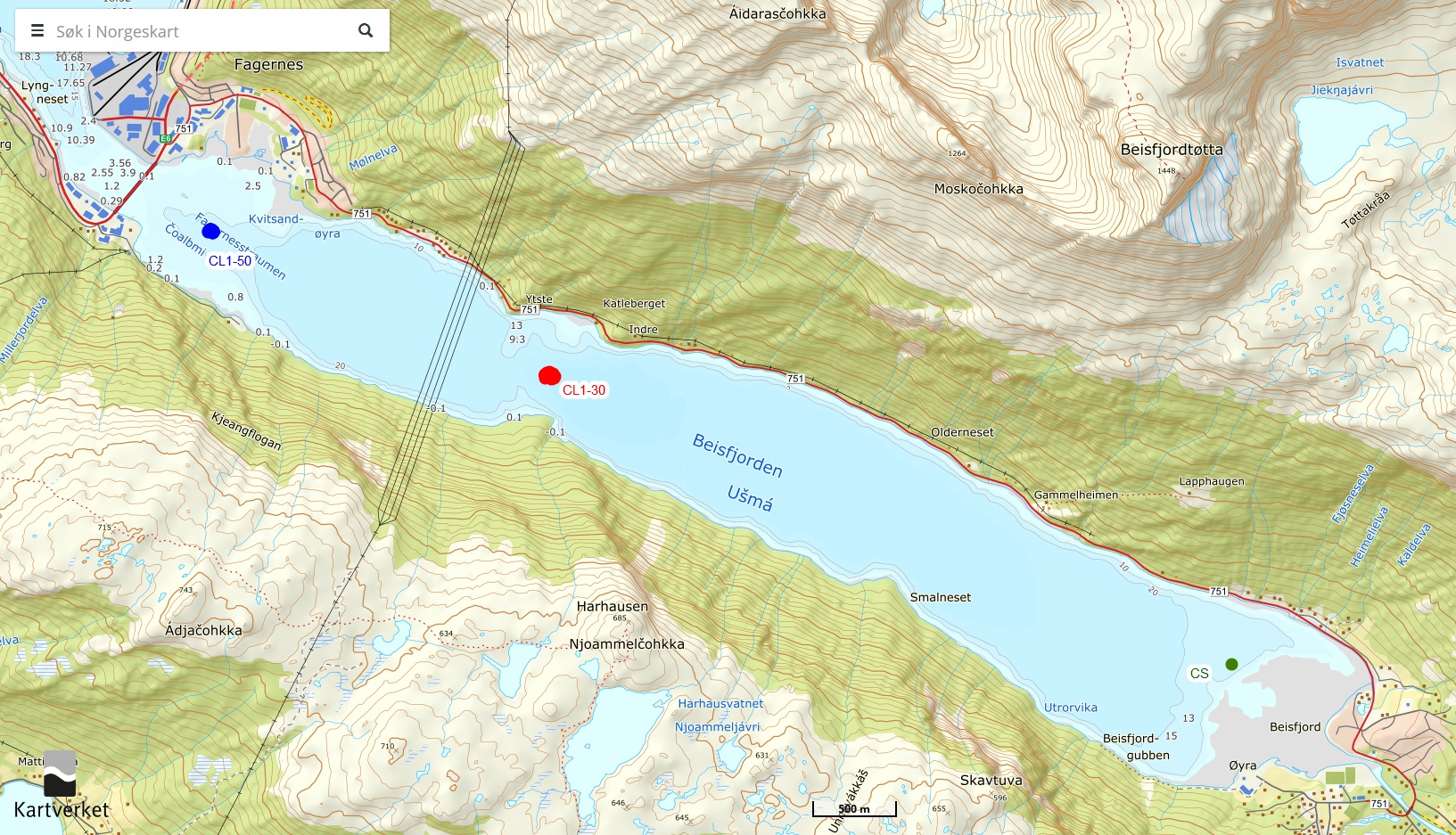Data

Open map at Norgeskart
Timelapse photography and measurements of ice and water properties are performed in several fjords throughout Nordland and Troms districts to improve understanding of the physical processes contributing to differing ice conditions in fjords.
The fjords dotting the coast of mainland Norway occupy a distinct place in the larger field of fjord oceanography. While many are located in the arctic based on latitude, they lack the influence of glaciers and the seasonal ice cover found in regions like Svalbard (Cottier et al., 2010). They also cannot be grouped with lower latitude fjords where conditions are warmer and sea ice consistently does not form (Inall & Gillibrand, 2010). While measurement campaigns have been undertaken to better understand the oceanic conditions specific to these regions, these works have not addressed sea ice formation (e.g. Cushman-Roisin, Asplin, & Svendsen, 1993; Eilertsen & Skarðhamar, 2006; Tverberg, Cushman-Roisin, & Svendsen, 1991; Svendsen, 1995; Mankettikkara, 2013; Skarðhamar et al 2018). The presence of ice in fjords can influence a number of physical processes however - it can disrupt the impact of wind and currents, slow the transfer of heat from air to ocean and reverse, lower the amount of solar radiation penetrating the water column. These physical impacts often have repercussions for the biological and geochemical processes within these areas as well. In addition, ice can act both as a tool and a disturbance to humans. For these reason, ice conditions in fjords is a topic of increasing interest as the arctic opens to more development and ship traffic.
Project contact: Megan O'Sadnick